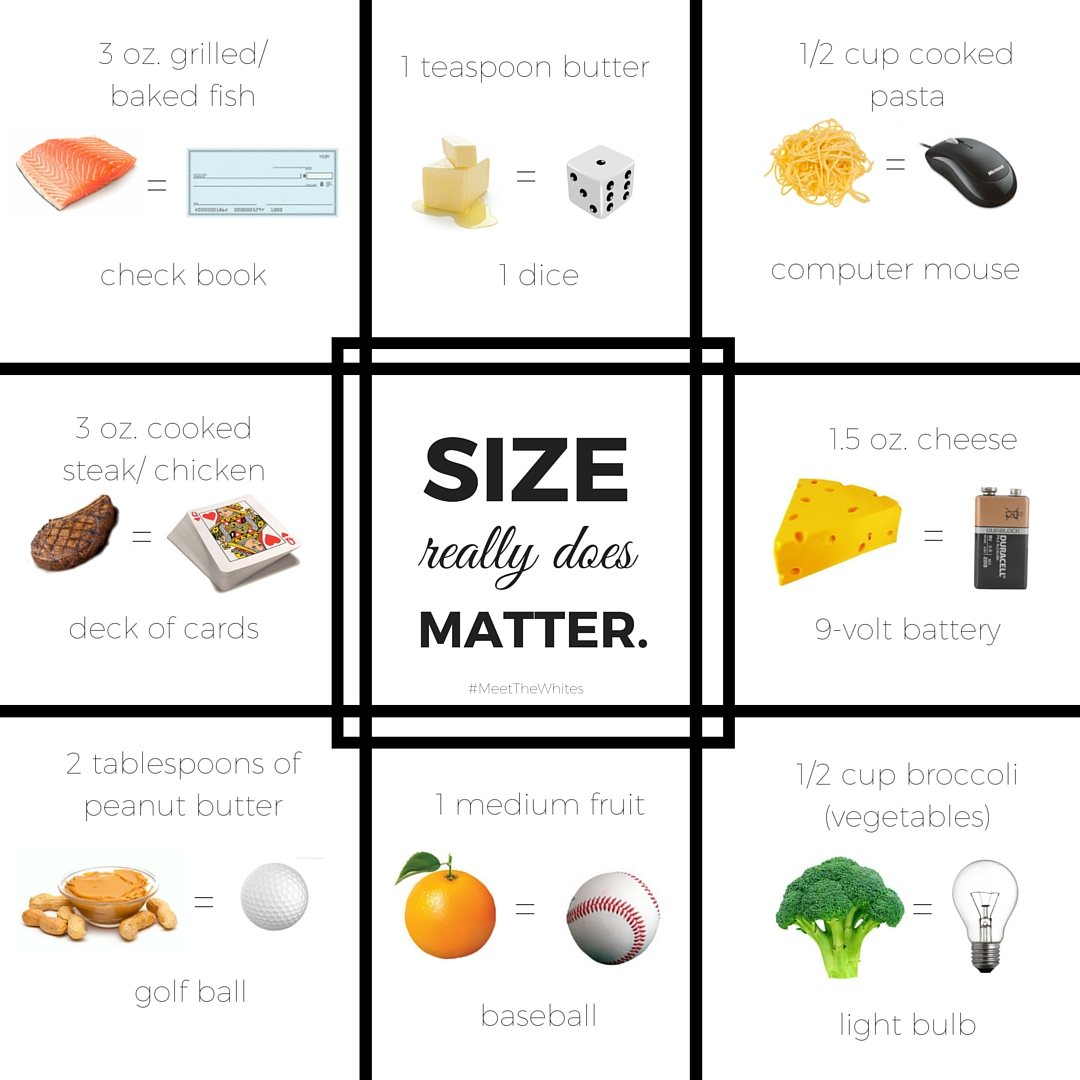You know that saying “size matters”. Well, it’s true. Portion sizes, that is. A portion is how much food you choose to eat at any given time – whether dining out at a restaurant, eating from a package or something you made in your own kitchen. A portion is something we have full control of but many times gets confused with a serving size. A serving is the amount of food recommended on the product’s nutrition label.
When it comes to seeing results (whatever that may be – gaining weight, losing weight, gaining muscle, etc.) it’s not only important to watch the kinds of foods you eat, but also how much you are eating of those foods because it’s also possible to eat TOO MUCH of the good foods. So here are some tips for those hearty portioners out there.
Goal: Slow Down Your Eating
- Limit distractions while you are eating so you can be more aware of your portion sizes. Turn off the television, computers, and phones while eating.
- Eat at a slower pace so you can recognize signs of fullness.
- Stop eating when you feel the first physical signs of comfortable fullness, such as slight pressure in your stomach.
- You should not feel stuffed, bloated, or tired after you eat.
Goal: Eat More Food for Fewer Calories
Build a “perfect plate“:
- Fill 50% of your plate with fruits and/or vegetables
- Fill 25% of your plate with whole grains (brown rice, whole wheat pasta)
- Fill 25% of your plate with lean proteins, (3 ounces skinless white meat chicken or fish, or cup of beans)
Eat foods high in water as a first course:
- Broth or bean-based soups, such as minestrone or lentil.
- Choose salads made mostly of vegetables and served with low–fat dressing. Avoid larger main course salads with nuts, eggs, cheese, and full fat dressing.
- Drink a cup or 2 of water before your meal or snack.
Goal: Know Serving Sizes
- Use smaller plates, bowls, glassware, and silverware.
- Read food labels looking at serving size first.
- Buy pre-portioned items in individual serving sizes such as cookies, cheese, nuts, ice cream. If something does not come in pre-portioned packages, use baggies to make your own single-serving portions.
- Use measuring spoons, cups, and a scale to weigh and measure everything you eat until you can eye-ball your portion size – or use the diagram above to relate portion sizes to every day items.
Goal: Avoid Portion Traps
- High-risk examples include buffets, two-for-one deals at grocery stores, bread or chips on the table at restaurants, family-style meals.
- Limit alcohol before meals; it can stimulate your appetite and cause overeating.
Tips for Handling Portion Traps
- Buffets: Avoid them or use the two plate rule – fill your first plate with fruits and vegetables only and use the second plate for small amounts of only three of your favorite choices.
- Grocery stores: Don’t shop hungry; shop from a list; and choose two-for-one deals only if they are for healthy items, such as fruits, vegetables, whole grains, or lean proteins.
- Bread or chips on the table: Take one piece of bread or 10 chips and send the rest back; or keep them out of reach.
- Family style meals: Keep food in the kitchen, not on the table to help cut back on second helpings. Keep fruit and vegetable side dishes on the table to encourage seconds.
The more portion control you can practice, the better your results!
xx, K


